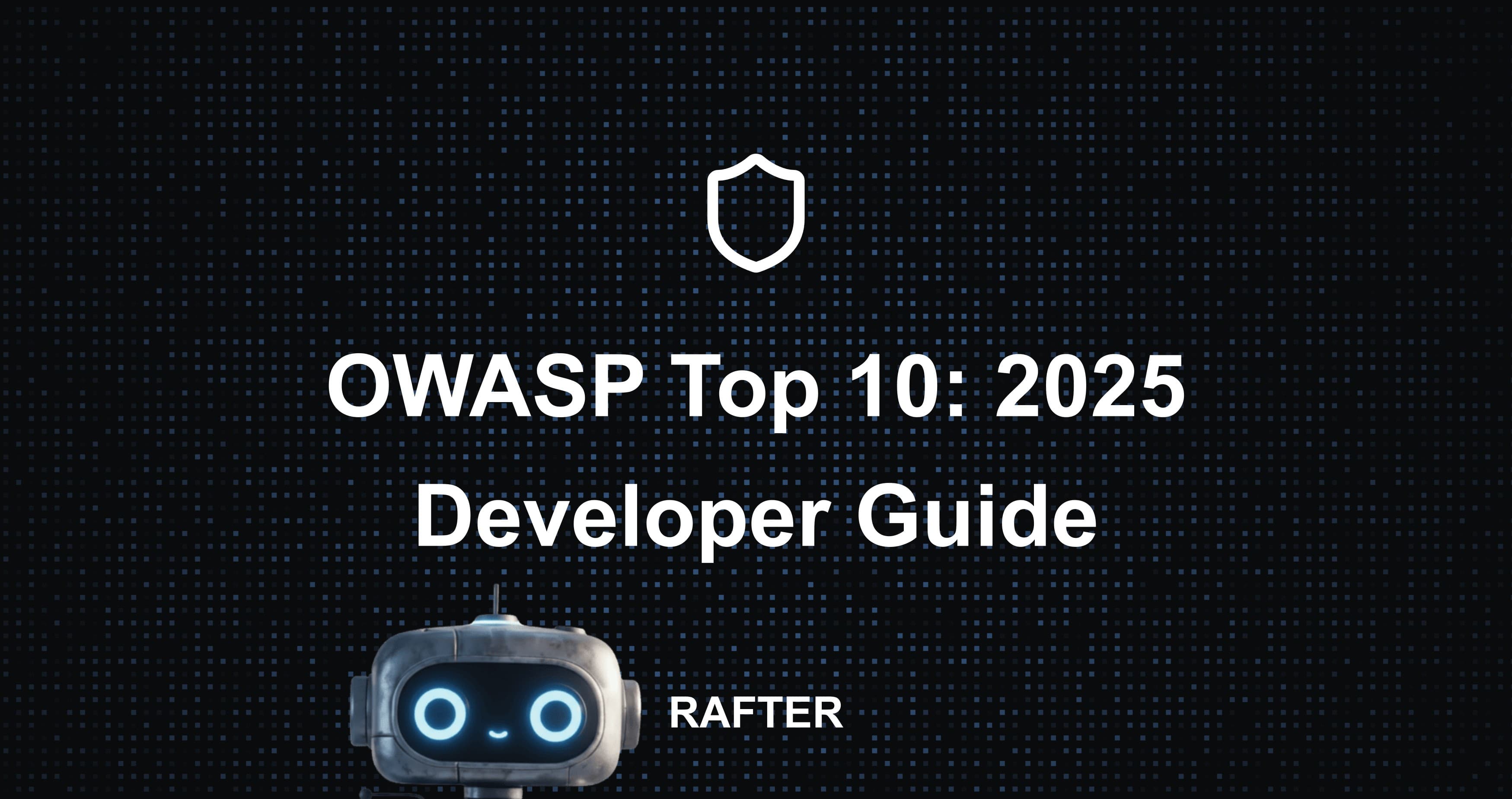
9/23/2025 • 5 min read
OWASP Top 10: 2025 Developer Guide
You're moving fast, shipping features, and the last thing on your mind is a data breach. But attackers don't wait. They thrive on missteps: a forgotten config, an outdated dependency, an API that trusts too much.
That's why the OWASP Top 10 exists. It's the gold standard list of the most critical web application security risks — adopted worldwide by developers, enterprises, and auditors.
In this guide, we'll break down each OWASP Top 10 category in plain English, share real-world examples, and show how you can prevent these mistakes in your own code.
Introduction
The Open Web Application Security Project (OWASP) is a nonprofit foundation focused on improving software security.
Every few years, OWASP publishes the Top 10: a ranked list of the most critical security risks facing web applications, informed by data from breaches, research, and industry input.
Why it matters:
- It's a baseline standard used by auditors, compliance frameworks, and enterprises.
- It helps developers learn how attackers actually exploit real-world apps.
- Most modern breaches map back to at least one OWASP Top 10 category.
In this article, we'll walk through the 2025 OWASP Top 10 list, explain each category in plain language, and give you practical fixes you can apply today.
The OWASP Top 10 Risks (2025 Edition)
1. Broken Access Control
- Definition: Users are able to access resources or perform actions outside their intended permissions.
- Example: Changing
user_id=123in a URL touser_id=124exposes another customer's account. - Impact: Data leaks, privilege escalation, full account takeover.
- Fix:
- Enforce authorization server-side (never trust the client).
- Apply the principle of least privilege.
- Add automated tests for permission checks.
2. Cryptographic Failures
- Definition: Sensitive data is exposed due to weak, missing, or misused cryptography.
- Example: Passwords stored in plain text, or using outdated algorithms like MD5.
- Impact: Credential theft, identity fraud, regulatory fines.
- Fix:
- Use TLS everywhere.
- Hash passwords with
bcrypt,scrypt, orArgon2. - Encrypt sensitive data at rest with AES-256.
3. Injection
-
Definition: Malicious input alters queries or commands sent to an interpreter.
-
Example:
SELECT * FROM users WHERE id = '1 OR 1=1';returns all users instead of one.
-
Impact: Full database compromise.
-
Fix:
- Use parameterized queries or ORM libraries.
- Validate and sanitize inputs.
- Employ database least privilege.
4. Insecure Design
-
Definition: Security flaws at the architectural level, not just in implementation.
-
Example: A banking app that doesn't enforce rate limits or MFA.
-
Impact: Business logic abuse, fraud.
-
Fix:
- Perform threat modeling during design.
- Add security requirements alongside functional ones.
- Use secure design patterns (e.g., Zero Trust).
5. Security Misconfiguration
-
Definition: Insecure defaults, open services, missing hardening.
-
Example: Leaving an AWS S3 bucket public.
-
Impact: Mass data exposure, ransomware.
-
Fix:
- Harden configs by default.
- Patch systems regularly.
- Use IaC scanning tools to detect risky configs.
6. Vulnerable and Outdated Components
-
Definition: Using libraries, frameworks, or components with known vulnerabilities.
-
Example: The Log4j vulnerability (2021) exploited worldwide.
-
Impact: Remote code execution, system compromise.
-
Fix:
- Run dependency scans (npm audit, pip-audit, Rafter).
- Keep a Software Bill of Materials (SBOM).
- Update dependencies proactively.
7. Identification and Authentication Failures
-
Definition: Weak or broken authentication flows.
-
Example: JWT tokens with no expiration date.
-
Impact: Account takeover, session hijacking.
-
Fix:
- Use proven identity solutions (OAuth2, OIDC).
- Add MFA.
- Implement secure session management.
8. Software and Data Integrity Failures
-
Definition: Trusting unverified code, data, or updates.
-
Example: Supply-chain attacks like the NPM event-stream compromise.
-
Impact: Malicious code execution inside trusted apps.
-
Fix:
- Use signed packages and verify checksums.
- Maintain CI/CD integrity controls.
- Adopt zero-trust dependency policies.
9. Security Logging and Monitoring Failures
-
Definition: Missing or insufficient logging/alerting for security-relevant events.
-
Example: No alerts when an attacker brute-forces passwords.
-
Impact: Breaches go undetected for months.
-
Fix:
- Centralize logging.
- Monitor authentication events, errors, and privilege changes.
- Add anomaly detection and alerts.
10. Server-Side Request Forgery (SSRF)
-
Definition: An attacker tricks the server into making unintended requests.
-
Example: Exploiting SSRF to access cloud metadata endpoints (http://169.254.169.254/).
-
Impact: Credential theft, lateral movement in cloud environments.
-
Fix:
- Whitelist outbound requests.
- Validate URLs strictly.
- Segment internal services.
Why OWASP Top 10 Still Matters
- Industry standard: adopted by enterprises, auditors, and compliance frameworks.
- Learning framework: helps devs build a security mindset early.
- Relevant today: most modern breaches (GitHub API key leaks, dependency exploits, ransomware) map directly to OWASP categories.
How to Apply This as a Developer
- Shift left: add security checks early in the dev cycle.
- Automate scanning: tools like Rafter can run OWASP-related scans every push.
- Secure defaults: use frameworks and libraries with security baked in.
- Educate the team: regular training, code review checklists.
Conclusion
The OWASP Top 10 isn't just an academic list. It's a field guide to the risks attackers exploit every day.
To recap:
- Learn the categories.
- Map them to real-world failures.
- Apply fixes: parameterized queries, strong auth, secure configs, scanning tools.
Run a Rafter scan today and see how your project measures up against the OWASP Top 10.